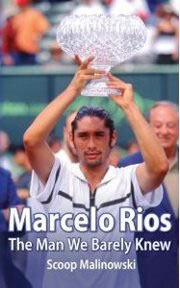Despite the economy, the U.S. Open may set attendance and revenue records again this year. What’s so great about tennis anyway?
While the economy has hurt many sports events, the annual U.S. Open tennis tournament, which begins today, is proving to be nearly recession-proof. During its two-week run, revenue for the New York City tournament will come close to last year’s total of $208 million, says Pierce O’Neil, chief business officer for the U.S. Tennis Association (USTA), which owns the event. “If all the stars continue to align, this could be one of the best years we’ve ever had,” he says.
These days, such optimism is hard to come by in other sports. The Arena Football League, which just a couple of years ago was touted as a major success story, suspended play in December and will probably liquidate. The LPGA women’s pro golf tour has lost seven tournaments, costing Commissioner Carolyn Bivens her job.
Meanwhile, the $80 million in ticket sales for the U.S. Open is near last year’s record haul, which produced a total attendance of 720,227. The Open’s attendance is bigger than that of any other annual sporting event across the globe. Even hospitality revenue, which surged in past years as Wall Street firms threw fancy parties on the Open’s grounds, will approach last year’s total, O’Neil says. “We have had to do more small deals to get to that number than in the past, but in the last month we’ve seen a lot of new business.”
The Open’s cash intake was lagging until about two months ago, O’Neil acknowledges. But then came more and more news suggesting that the economy had bottomed out. That encouraged corporations and fans alike to spend on the Open, which will have 21 sponsors this year, the same number as in 2008, including IBM and JPMorgan Chase.
Those sponsorships will produce almost as much revenue as last year’s $60 million, O’Neil says. “[The U.S. Open] has been a very good showcase for our technology … It’s very constructive,” says Rick Singer, vice president of sports marketing for IBM, which just signed a four-year contract, ensuring that the USTA will have a marquee sponsor no matter what happens to the economy in the years ahead.
It helps that Wimbledon, the last major tennis event before the Open, featured a classic final between Roger Federer and American Andy Roddick. The rivalry between Federer and Rafael Nadal, who could potentially meet in the Open final this year, along with the return of women’s tennis stars like Kim Clijsters, a healthy Maria Sharapova, and the Williams sisters, make for a tantalizing draw.
With players who transcend their sports and cross over into popular culture, events like the Open are able to lure a general audience. “It attracts people who might not even be tennis or sports fans, but who want to be part of the experience,” O’Neil says. Another plus: tennis isn’t a male-dominated sport. About half of the sport’s fan base is female, a much higher proportion than for, say, football, which has about 35 percent. Tennis fans are also relatively wealthy. According to the USTA, the median income for an Open attendee is $150,000. For the merely rich, “a day of tennis isn’t like going to Europe or buying a new car,” says Pam Shriver, a tennis commentator for ESPN who also runs an annual tennis charity event. And for the ultrarich, though they may be curbing purchases of yachts and airplanes, “tennis is more comfortable,” she notes.
The timing of the Open also helps bring fans in. “It’s at the end of summer, before kids go to school and when people are still on vacation,” says Phil de Picciotto, a top executive at Octagon sports agency. For some, it’s a staycation. Those who still have a day job can pay $32 for a ticket to a night session inside the Arthur Ashe Stadium, the largest tennis arena in the world.
“The U.S. Open, like the Indianapolis 500, the Kentucky Derby, the Super Bowl, and U.S. Open golf, may go down a little bit in a recession, but events like these are just solid as a rock,” says John Korff, whose Korff Enterprises owns and operates several athletic competitions, including the New York City Triathlon. If the USTA’s revenue projections are on track, says Korff, that “would be a grand-slam home run in this economy.”
Article was published on August 31, 2009 at www.Newsweek.com.




















